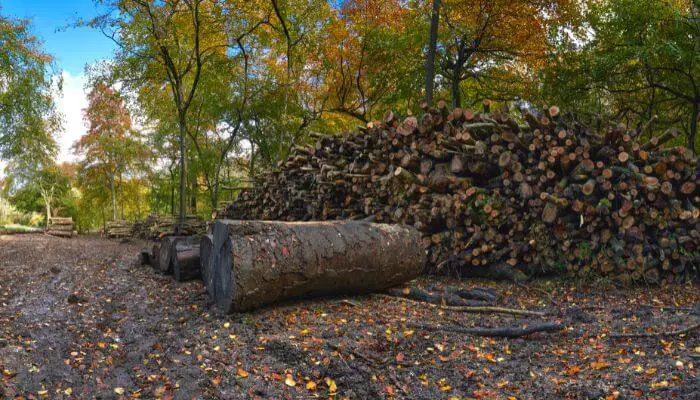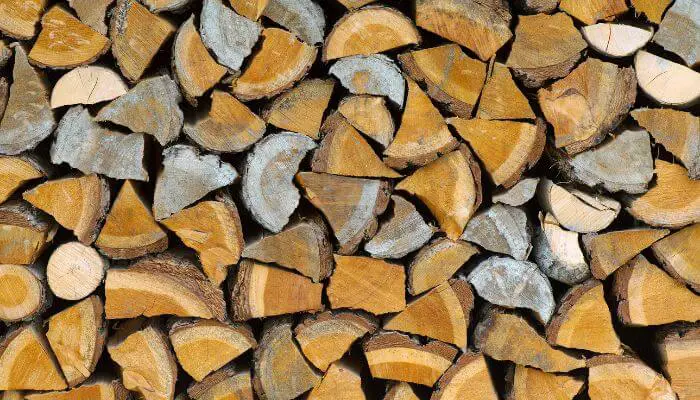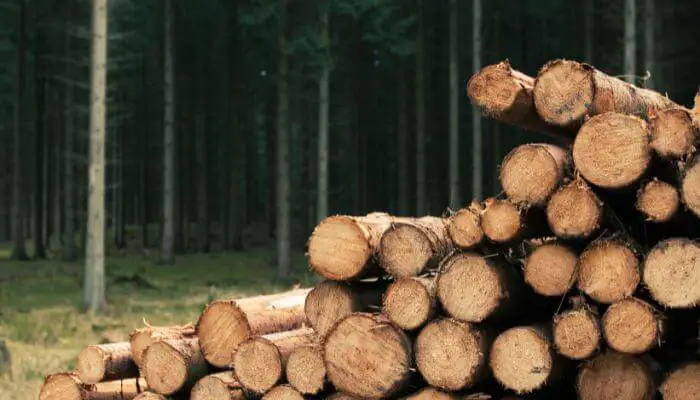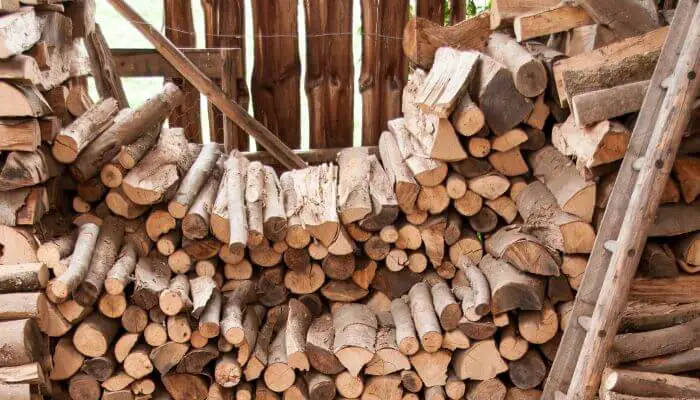Do you have a fireplace or a wood-burning stove? If yes, preparing firewood has become a part of your daily chores, most likely.
During rainy or snowy days, you do not want to waste your efforts cutting and stacking firewood logs just to get them wet and ruined.
This begs the question of how to keep firewood dry outside. Read on to find out!
6 Foolproof Ways of Keeping Your Firewood Dry:
You can keep your firewood from getting wet and ready for use with these simple tips:
1. Stack the Wood Away From the Fence or Wall
Stacking your firewood away from a fence, wall, or any similar surface is recommended to allow maximum airflow.
Air circulation will help your wood logs dry out faster, and putting them against a wall will reduce the circulation of air.

It’s suggested that firewood should be stacked at least 3-5 feet away from any surrounding wall.
Besides the drying aspect, critters can live in your firewood. So, stacking firewood logs close to a window or door means that the critters will be close to your house.
2. Stack It Tightly
If firewood isn’t stacked correctly, fungus and mold can grow, and the wood won’t burn well.
Seeing as moisture tends to escape from the ends of wood logs when they’re stacked, you need to make sure the cut ends are exposed.

Here’s how to stack firewood properly:
- Stack the wood bark side up in a single row as evenly as possible. Stack the wood bark side down if you’re stacking in a shed or some sort of covered area.
- Make sure you’re stacking the wood as tightly as possible to ensure stability.
- Make sure there are spaces in between to allow air circulation
- Make pillars at each end by using a crisscross pattern for extra stability.
- Don’t make a stack that’s longer than 4 feet high, as it can fall easily over.
3. Elevate the Firewood
Elevating your firewood will prevent pests from living underneath it. It will also keep the wood dry. An easy and affordable way is to stack them on top of pallets.
Pallets will allow for good airflow beneath the wood and prevent moisture from coming in from the ground, the same approach is also used to keep bales of hay dry.
Remember to place your pallets on level ground to prevent your stack from falling.
If pallets are unavailable, you can use 2×4 or 4×4 treated boards to elevate your stack.
4. Don’t Stack It Under Trees
Stacking firewood under trees isn’t very wise.

The water from the trees will drip onto your wood when it rains, similar to storing them alongside the gutter.
5. Don’t Stack in Low-Lying Areas
You should avoid stacking your firewood in low-lying areas.
Firewood will rot quicker due to the moisture in the ground from dew, mist, and other elements, not to mention bacteria and insects present in these areas.
6. Use a Firewood Cover
In case you need to cover your wood due to rain or snow, you can use the following:
- A tarp
- Breathable covers
- Firewood cover that comes with firewood rack
- An outdoor storage shed

When Should Wood Be Covered/Uncovered?
It’s a misconception that firewood should be covered. Green wood (freshly-cut wood) should, in fact, be left uncovered to let it breathe and continue to dry.
You can only cover them when it’s going to snow or rain. Remove the cover right after the snow or rain has stopped so that the wood can continue drying.
How Long Does It Take for Firewood to Dry?
It takes 4-6 months for wood to dry and become fully seasoned firewood. Hardwood, per contra, takes longer, around 12 months at least.
You’ll know that your firewood is dry if it has cracks as well as a dull, grayish color. It will also be lighter than green wood, which still has moisture.
It’s also worth noting that green wood also has a strong odor, thick bark, and a lot of sap.
Why Does Firewood Need to Dry Before Burning?
Firewood needs to dry before burning for a couple of reasons.
First is that green wood, when burned, will emit a lot of smoke. This is a health hazard when burning wood indoors, as it can increase the level of carbon monoxide in your home which can be extremely dangerous.
Burning green wood will also create a creosote build-up in your chimney. Creosote can cause more problems like damage to your chimney, increased fire risk, and even poisoning from the fumes.
Can You Store Firewood Inside?
You may wonder, why not just keep firewood indoors so it won’t get wet? Well, this might be a bad idea for a few reasons.
As previously mentioned, firewood needs airflow to dry, and keeping it inside will prolong the drying process.
Keeping firewood inside your home is almost the same as inviting insects. Wood is a perfect host for bugs, carpenter ants, termites, wood-boring beetles, and more.
Yes, it has also been a trend in interior design to decorate homes with firewood, but you must keep in mind that the firewood used in interior design is treated.
It’s also best not to store firewood inside your home to prevent the possibility of a spark igniting the wood, thus leading to fire.
You can use a wheelbarrow to transport wood in the house and bring just enough firewood for 1-2 days. Whatever you bring indoors cannot be left for a long period of time.

